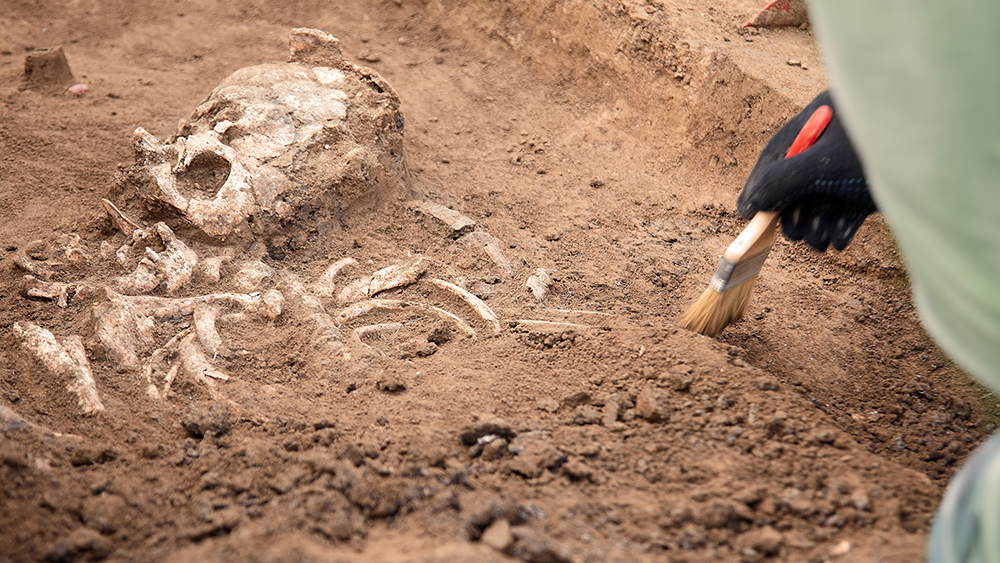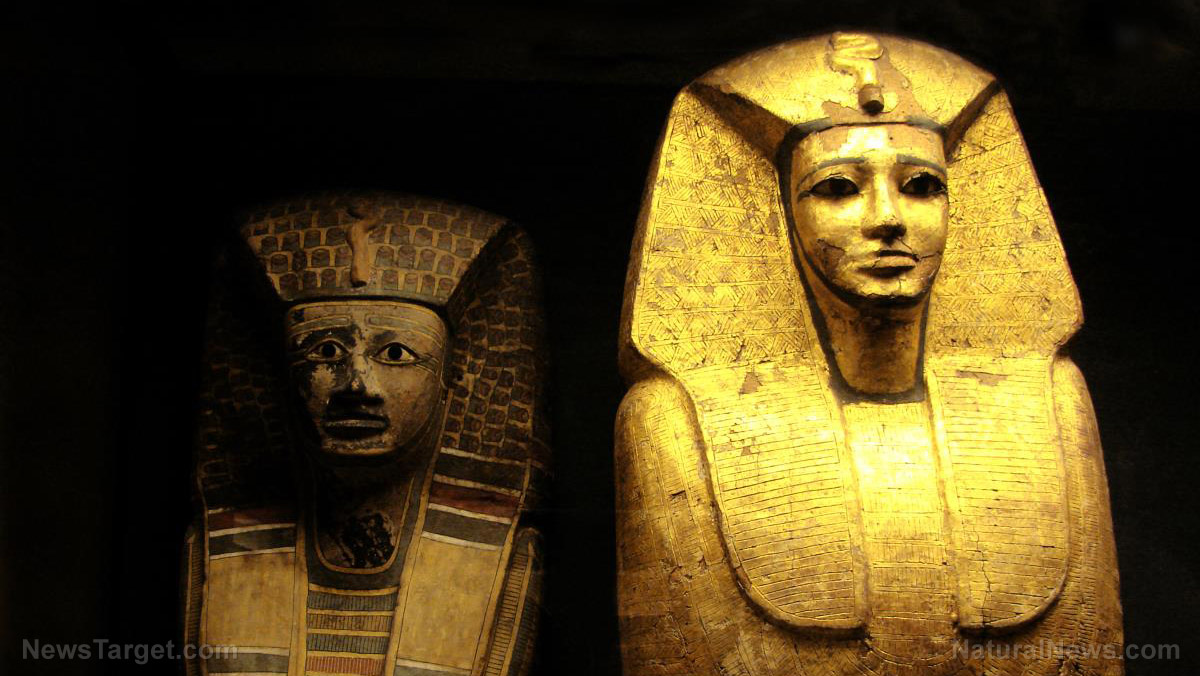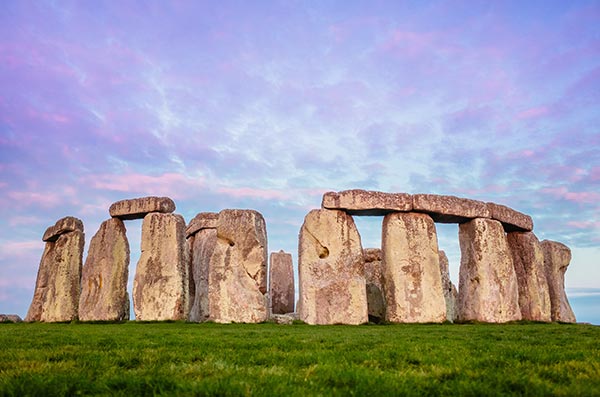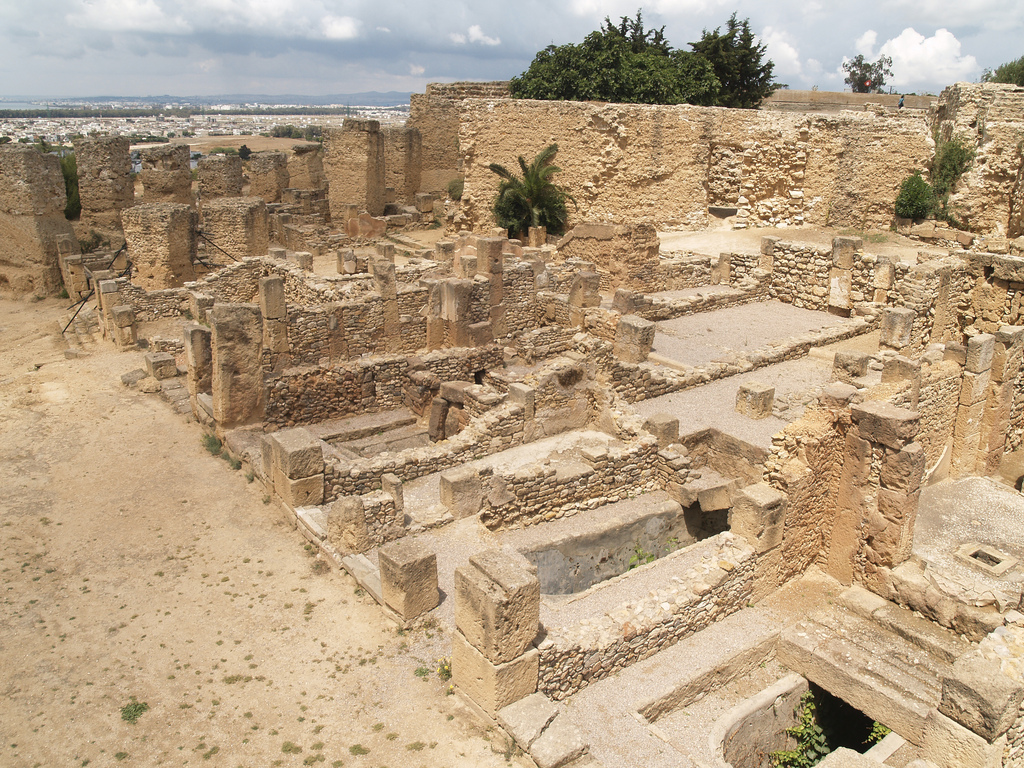Collapsed boulder in Grand Canyon reveals fossilized tracks of egg-laying animals that lived over 300 million years ago
08/23/2020 / By Virgilio Marin

A collapsed boulder from the Grand Canyon reveals the existence of two unknown egg-laying animals.
The two animals, believed to be the same species, trekked across the sand dunes that are now the Grand Canyon. And their footprints are preserved in the boulder that accidentally collapsed from a cliff along the Bright Angel Trail, Arizona.
Researchers from the University of Nevada, Las Vegas, the Society for Sedimentary Geology and the College of Southern Nevada said that the fossil footprints dated 313 million years old are the oldest known fossils of their kind.
“These are by far the oldest vertebrate tracks in Grand Canyon, which is known for its abundant fossil tracks,” said lead author Stephen Rowland. “They are among the oldest tracks on Earth of shelled-egg-laying animals, such as reptiles, and the earliest evidence of vertebrate animals walking in sand dunes.”
The findings of the study are published in the journal PLOS One.
Fossil footprints were left by amniotes
The boulder was discovered in 2016 by Norwegian geology professor Allan Krill. Krill, who did not co-author the study, was touring his students in the Grand Canyon when he stumbled upon a collapsed boulder with curious claw-like indentations on one side.
He took photos of the boulder and sent them to Rowland, who determined with his colleagues that it belonged to the Pennsylvanian geological period. Pennsylvanian is a subperiod under Carboniferous, which is credited as the time when amniotes, or animals that bear their offspring in a shelled egg, appeared.
The team found that the indentations were indeed footprints of an animal that walked on all fours, possibly an amniote. The indentations bear four footprints per row and are three inches apart. Because of the mold of each footprint, the researchers said that the animal likely had claws.
Furthermore, the reconstruction of this animal’s footfall sequence indicated a lateral-sequence gait, in which the legs on one side of a tetrapod moved in succession. Dogs and cats are some of the animals that walk in a lateral-sequence gait.
“The Bright Angel Trail tracks document the use of this gait very early in the history of vertebrate animals. We previously had no information about that,” said Rowland.
The researchers also discovered another set of tracks just several inches away from the first. This second set, made by trackmaker 2, is less noticeable and has many missing footprints that are spaced regularly. This is because trackmaker 2 possibly had a limp.
“The distance between successive right and left prints within each step cycle is consistently slightly less than the distance between successive left and right prints,” wrote the researchers.
They added that trackmaker 1 made the passage hours or days before trackmaker 2. In addition, based on morphological analyses of the tracks, the two trackmakers were likely the same species or even the same animal.
Crocodiles once walked on two legs
In another study published in the journal Scientific Reports, researchers examined fossil footprints found in a South Korean Cretaceous site.
The Cretaceous period lasted about 145 to 66 million years ago and is known as the last stage of the “Age of Dinosaurs.” It ended with the mass extinction of dinosaurs, widely believed to be caused by an asteroid impact.
In the study, the researchers found that the animal responsible for the footprints walked on two legs like the dinosaurs at the time. The trackmaker, however, was not a dinosaur but a relative of crocodiles. (Related: Man and his dog: A new discovery of carved rock images showing dogs on leashes are estimated to be 9,000 years old.)
It’s still unclear what this crocodile looks like. But it does address the mystery of another fossil footprint that was found in another South Korean site called Gain-ri. Researchers previously thought that the tracks on this location were made by large pterosaurs – flying reptiles from the Age of Dinosaurs that walked on land. But recent studies on pterosaurs found that the species walked on all fours.
With the crocodile’s identity unknown, future research will have to dig deeper into Earth, looking for bones that might have walked on Earth and left these footprints.
Artifacts.news has more on recent archaeological findings.
Sources include:
Tagged Under: ancient animals, animals, Archaeology, artifacts, crocodiles, Dinosaurs, environment, mysterious, prehistoric Earth, real history, research
RECENT NEWS & ARTICLES
COPYRIGHT © 2017 ARTIFACTS NEWS


















